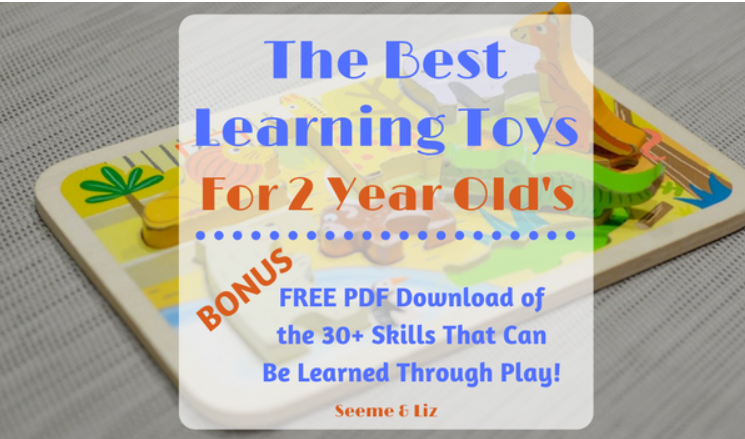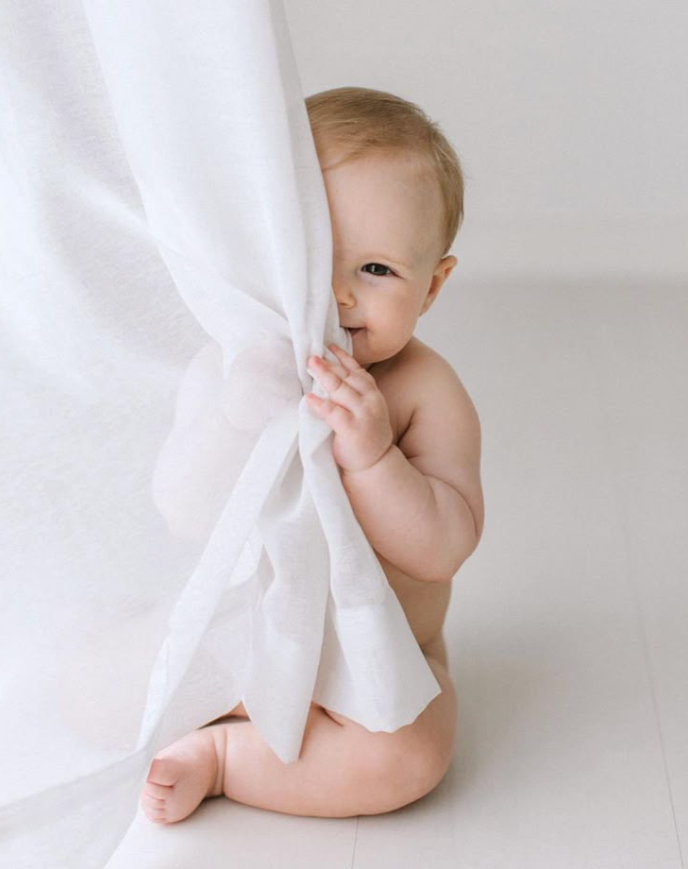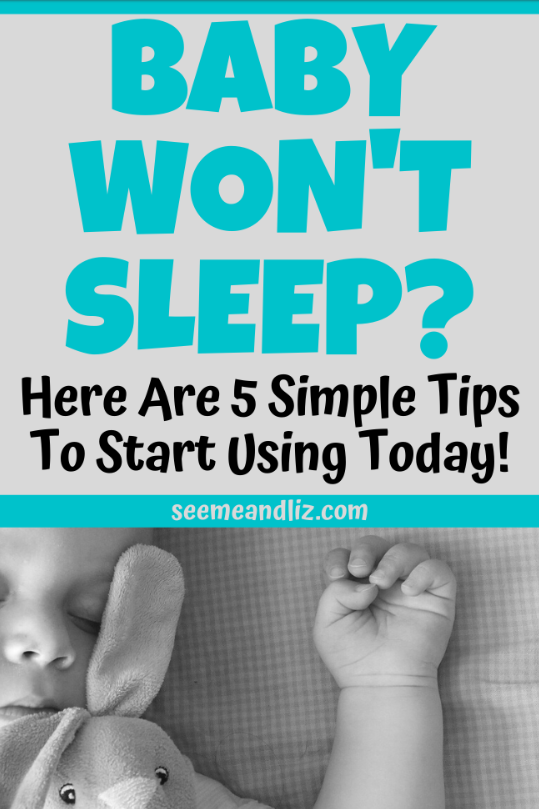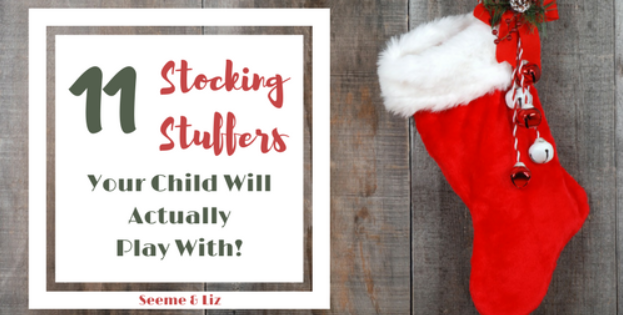As I mentioned in the Best Learning Toys For Babies article, the purpose of the “Best Learning Toys” series is to help you choose toys that will engage your child and help him/her learn language skills through play.
The toys presented are in no particular order and are not made by a specific toy company.
They are general categories such as blocks, vehicles, etc.
I will give you ideas for how you and your child can play with these toys to enhance learning.
When I talk about “learning” I am not referring to academic skills. Rather, I am providing you with ways to enhance speech and language development, fine and gross motor skills, problem solving, etc.
All of these toys were pretty standard in my speech and language therapy sessions with 2 year old’s! Although I don’t mention it for each description, all of these toys are outstanding for pretend play.
To skip to a toy category in this guide, click on its name:
- Blocks
- Ride On Vehicles
- Mr/Mrs Potato Head
- Chunky Puzzles
- Dolls
- Toy Farm Playset
6 Amazing Learning Toys For Toddlers!
There may only be 6 toys in this list, but it’s packed with skills that can be developed by playing with these toys. There is a lot of information to remember. So I’ve converted this article into a PDF file for you to download, print and share!
Blocks
Blocks should be a staple in every child’s toy box. My children who are now 8 and 10 still love blocks.
Although they have now advanced to LEGO, they started with basic blocks.
They actually had several sets, some plastic (like Mega Bloks) and some wooden ones (Melissa and Doug have some good wooden sets that don’t cost a fortune).
From a learning perspective, blocks of different sizes (and shapes, if wooden) are best because there are many building opportunities.
You can also get cube style blocks with pictures, letters and/or numbers. While these are good for targeting vocabulary, they aren’t quite as good for building.
Here are some specifics to keep in mind when playing with blocks:
- Vocabulary: Talk about what you are building. For example, maybe you are making a house. Use the word “house” frequently and also talk about what you might find in a house (rooms, chairs, beds, people, pets, doors, walls, roof, etc).
- Colors: Name the colors of the blocks. Most 2 year old’s are able to recognize a few colors and label 1-2. But remember, try not to test your child, keep the interactions natural!
- Prepositions: Some early prepositions that come up regularly during block play are “on” (put the red block on the green block), “off” (take one block off) and “on top” (Put the block on top). Other prepositions such as “in front, behind, under, beside, next to” can also be introduced.
- Counting: Count the blocks as you build. For example, “Let’s put 1, 2, 3 blocks on top of each other.”
- Problem Solving: Encourage your child to figure out how to balance blocks or how to make a tower taller without falling.
- Fine Motor Skills: Stacking and aligning blocks helps develop hand-eye coordination and dexterity.
- Imaginative Play: Use blocks to create pretend scenarios like building a zoo, a garage, or a castle.
Ride On Vehicles
Ride on vehicles are great for gross motor development and can also be used to enhance language skills.
They come in various forms such as cars, bikes, or animals.
Language and Learning Opportunities:
- Action Words: Use verbs like “go,” “stop,” “ride,” “push,” “pull,” “turn,” etc.
- Directional Words: Incorporate words like “forward,” “backward,” “around,” “through,” etc.
- Sound Effects: Make vehicle sounds like “vroom,” “beep beep,” “honk,” etc., to engage your child.
- Social Skills: If playing with others, take turns and practice sharing.
- Safety Concepts: Introduce basic safety rules like stopping at pretend stop signs or looking both ways.
Mr/Mrs Potato Head
This classic toy is excellent for teaching body parts, clothing items, and facial expressions.
Language and Learning Opportunities:
- Vocabulary: Name each body part as you attach it (eyes, ears, nose, mouth, arms, feet, etc.).
- Following Directions: Give your child simple instructions like “Put the hat on the head” or “Take off the nose.”
- Descriptive Language: Discuss sizes, colors, and shapes of the pieces.
- Emotions: Use different facial expressions to talk about feelings (happy, sad, angry, surprised).
- Fine Motor Skills: Manipulating the pieces helps develop hand strength and coordination.
Chunky Puzzles
Chunky puzzles with large, easy-to-grasp pieces are perfect for 2-year-olds.
Language and Learning Opportunities:
- Vocabulary: Name the objects or animals on each puzzle piece.
- Matching Skills: Help your child match pieces to their corresponding spots.
- Problem Solving: Encourage figuring out where each piece fits.
- Colors and Shapes: Discuss the colors and shapes of the pieces.
- Storytelling: Create simple stories using the puzzle images to enhance imagination.
Dolls
Dolls are not just for girls; they are great tools for teaching nurturing behavior and daily routines.
Language and Learning Opportunities:
- Body Parts: Identify and name body parts on the doll.
- Daily Activities: Pretend to feed, bathe, dress, and put the doll to sleep, narrating each action.
- Emotions: Talk about how the doll feels and why (e.g., “Baby is crying because she is hungry”).
- Social Skills: Role-play different scenarios to teach empathy and caregiving.
- Language Development: Engage in conversations with the doll to practice dialogue.
Toy Farm Playset
A farm playset introduces children to animals, their sounds, and farm life.
Language and Learning Opportunities:
- Animal Names and Sounds: Teach the names of animals and the sounds they make.
- Action Words: Use verbs like “jump,” “run,” “eat,” “sleep,” etc., in context.
- Spatial Concepts: Discuss where animals are (in the barn, on the field, under the tree).
- Counting: Count the number of animals or farm items.
- Storytelling: Create farm stories to enhance imagination and sequencing skills.
Remember, the key to using these toys for learning is active engagement and interaction. Talk with your child, ask questions, and encourage exploration during playtime.




